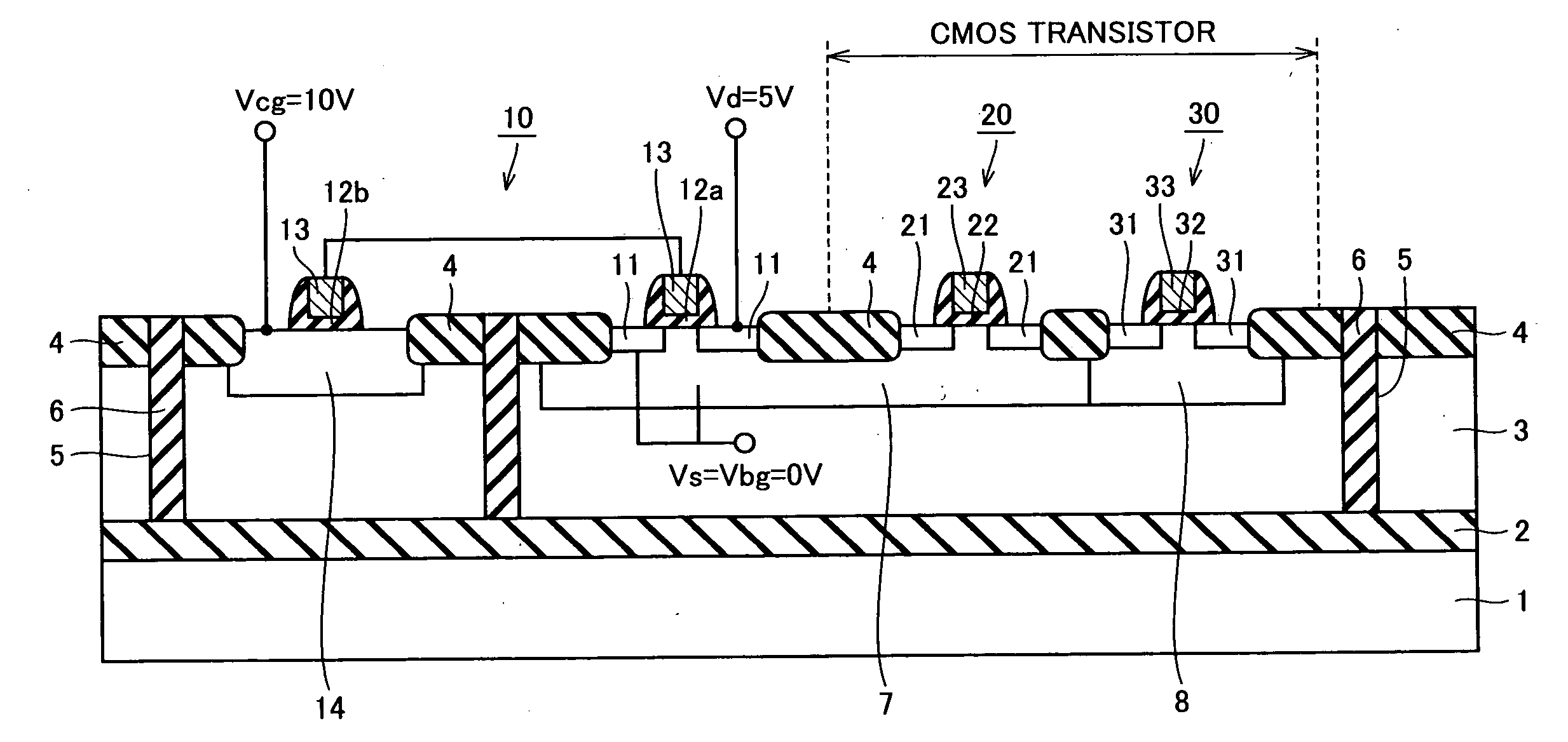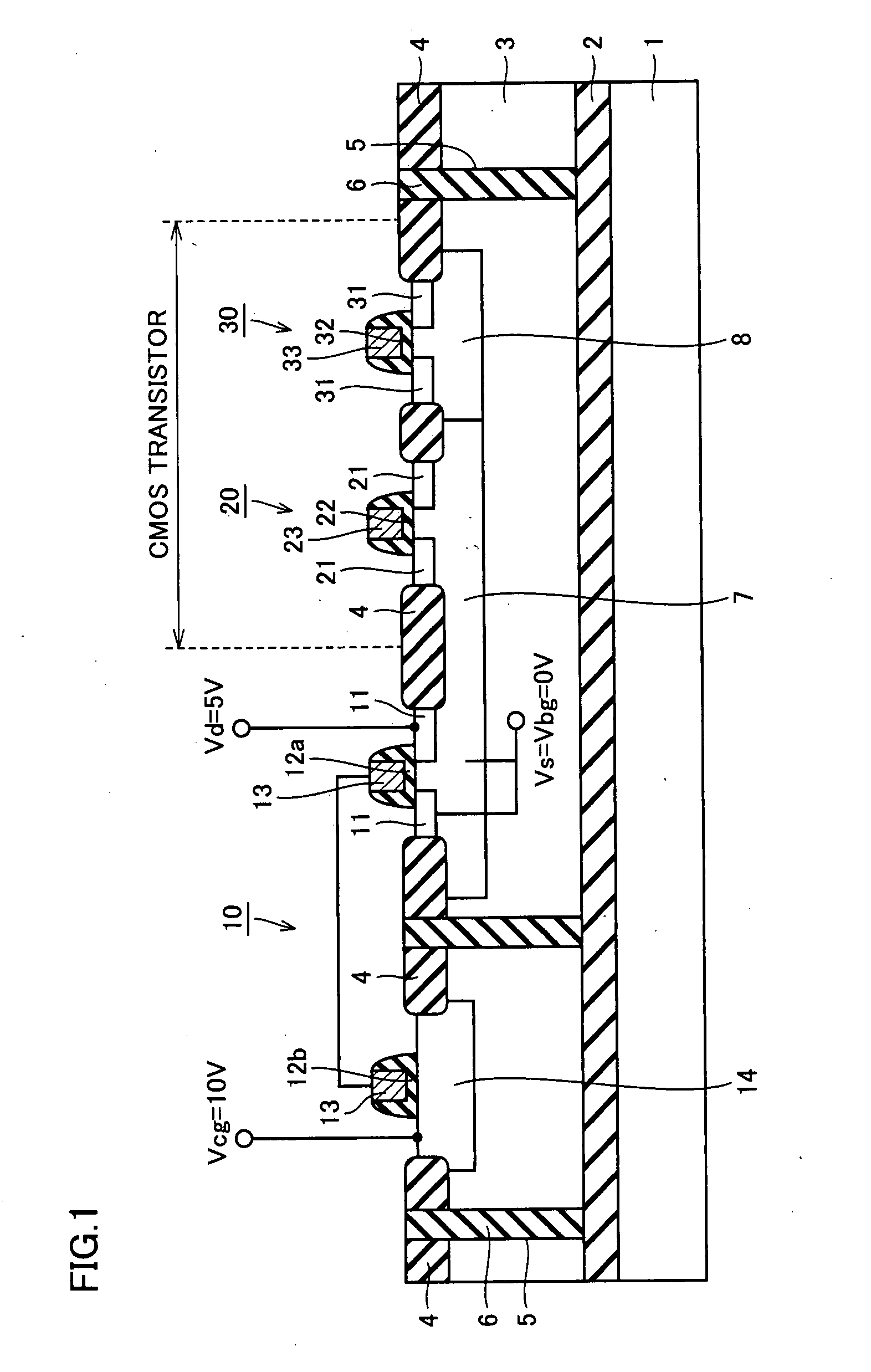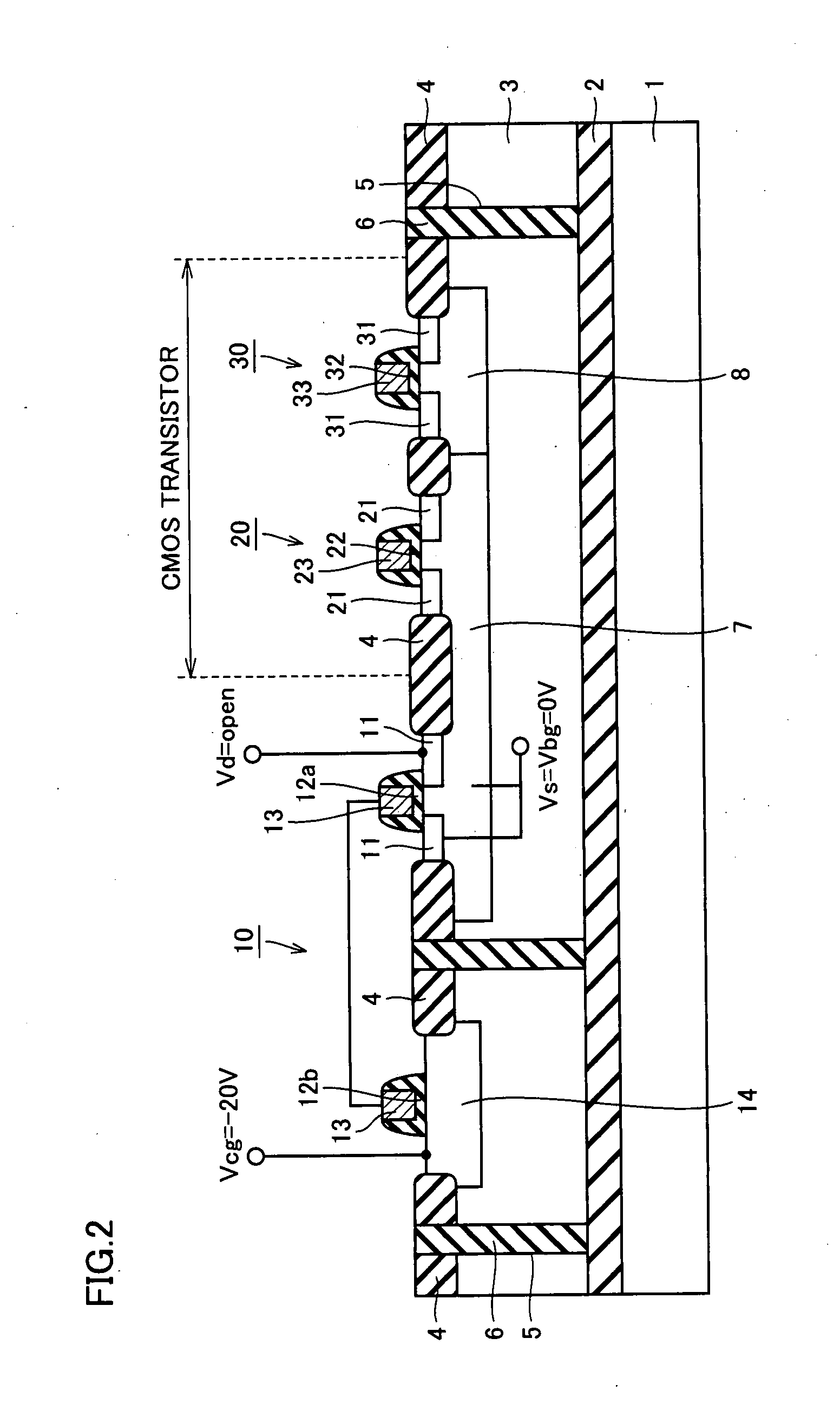Nonvolatile semiconductor memory device
- Summary
- Abstract
- Description
- Claims
- Application Information
AI Technical Summary
Benefits of technology
Problems solved by technology
Method used
Image
Examples
first embodiment
[0047]Referring to FIG. 1, in the present embodiment, a 1poly-type memory cell 10 is formed at SOI (Silicon on Insulator) substrate 1, 2, 3.
[0048]The SOI substrate has a support substrate 1, a buried insulating layer 2 formed, for example, of a silicon oxide film on support substrate 1, and an n− or p− semiconductor layer 3 formed, for example, of silicon on buried insulating layer 2. A field insulating layer 4 formed, for example, of a silicon oxide film is formed at a part of the surface of semiconductor layer 3. Here, buried insulating layer 2 is for example a BOX (Buried Oxide) layer.
[0049]The 1poly-type memory cell 10 mainly has a pair of n-type source / drain regions 11, 11, a floating gate electrode layer 13, and a control gate impurity diffusion region 14. A pair of source / drain regions 11, 11 is formed at a surface of a p-type well 7 formed at the surface of semiconductor layer 3. Floating gate electrode layer 13 is formed, for example, of polysilicon doped with an impurity a...
second embodiment
[0077]Referring to FIG. 15, in this embodiment, groove 5 is formed in semiconductor layer 3 to surround the periphery of source / drain region 11 and back gate layer (p-type well) 7 of the 1poly-type memory cell 10. Isolation insulating layer 6, for example, formed of a silicon oxide film is filled in this groove 5. Accordingly, isolation insulating layer 6 extends from the surface of semiconductor layer 3 to reach buried insulating layer 2 while surrounding the periphery of source / drain region 11 and back gate (p-type well) 7 and separates source / drain region 11 and back gate (p-type well) 7 from other element formation regions (for example, the formation region of CMOS transistors 20, 30).
[0078]Isolation insulating layer 6 surrounding the periphery of source / drain region 11 and back gate (p-type well) 7 and isolation insulating layer 6 surrounding the periphery of control gate impurity diffusion region 14 partially share an insulating layer portion.
[0079]The formation region of CMOS...
third embodiment
[0088]Referring to FIG. 17, the configuration of the present embodiment differs from the configuration of the first embodiment in that an isolation region 3a formed of a semiconductor layer is provided between isolation insulating layer 6 surrounding the periphery of control gate impurity diffusion region 14 and isolation insulating layer 6 surrounding the periphery of source / drain region 11 and CMOS transistors 20, 30.
[0089]It is noted that the other configuration is almost the same as the configuration of the first embodiment. Therefore the same elements will be denoted with the same reference characters and a description thereof will not be repeated.
PUM
 Login to View More
Login to View More Abstract
Description
Claims
Application Information
 Login to View More
Login to View More - R&D
- Intellectual Property
- Life Sciences
- Materials
- Tech Scout
- Unparalleled Data Quality
- Higher Quality Content
- 60% Fewer Hallucinations
Browse by: Latest US Patents, China's latest patents, Technical Efficacy Thesaurus, Application Domain, Technology Topic, Popular Technical Reports.
© 2025 PatSnap. All rights reserved.Legal|Privacy policy|Modern Slavery Act Transparency Statement|Sitemap|About US| Contact US: help@patsnap.com



